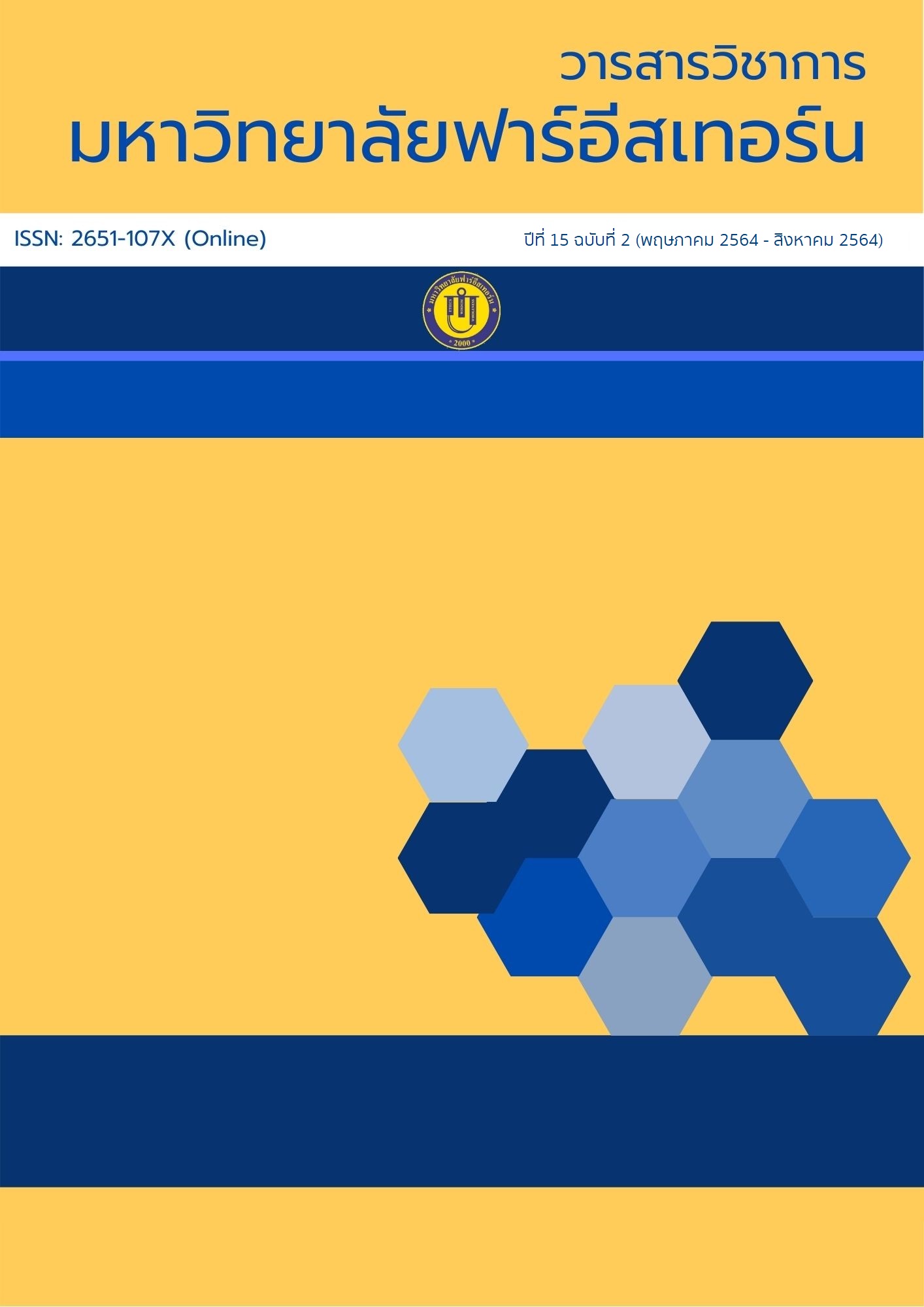Behavior enhancing tourism innovativeness among online social community
Main Article Content
Abstract
Tourism innovativeness of customer is an important issue for the innovation acceptance. The level of tourism innovativeness is different in each person. Such that, this research aims at investigate the individual factors affect to the level of tourism innovativeness and the behavior enhancing tourism innovativeness among online social community. A quantitative research was conducted with the samples of Pantip.com members in the Blue Planet forum that focus on tourism. Data of 321 samples were collected and analyzed by Analysis of Variance (ANOVA), t-test and Structural Equation Modelling (SEM). The results were found that individual factors of age and educational level influence differences in the degree of innovation among tourism innovativeness. Moreover, the behaviors enhancing tourism innovativeness consisted of 1) Media exposure, 2) Product involvement, and 3) Perceived knowledge respectively. All these three behaviors can explain tourism innovativeness at a high level, with the coefficient of determination at 0.778.
Article Details
1. Any views and comments in the Journal of Social Innovation and Lifelong Learning are the authors’ views. The editorial staff have not to agree with those views and it is not considered as the editorial’s responsibility.
2. The responsibility of content and draft check of each article belongs to each author. In case, there is any lawsuit about copyright infringement. It is considered as the authors’ sole responsibility.
3. The article copyright belonging to the authors and The Far Eastern University are copyrighted legally. Republication must be received direct permission from the authors and The Far Eastern University in written form.
References
Akaike, H. (1974). A new look at the statistical model identification. IEEE transactions on automatic control. 19(6), 716-723.
Aldás-Manzano, J., Lassala-Navarré, C., Ruiz-Mafé, C. & Sanz-Blas, S. (2009). The role of consumer innovativeness and perceived risk in online banking usage. International Journal of Bank Marketing. 27(1), 53-75.
Bandura, A. (1992). Self-efficacy mechanism in psychobiologic functioning. In R. Schwarzer (Ed.)
Bentler, P. M. & Bonett, D. G. (1980). Significance tests and goodness of fit in the analysis of covariance structures. Psychological bulletin. 88(3), 588-606.
Bonett, D. G. & Wright, T. A. (2015). Cronbach's alpha reliability: Interval estimation, hypothesis testing, and sample size planning. Journal of organizational behavior. 36(1), 3-15.
Byrne, B. M. (2001). Structural equation modeling with AMOS, EQS, and LISREL: Comparative approaches to testing for the factorial validity of a measuring instrument. International journal of testing. 1(1), 55-86.
Carmines, E. G. & Mclver, J. P. (1981). Analyzing models with unobserved variables: Aanlysis of covariance structures’, in Bohrnstedt, G. W. & Borgatta, E. F. (Eds.). Social Measurement: Current Issues. Sage, Beverly Hills, CA, 61-73.
Chang, A. Y. P. (2017). A study on the effects of sales promotion on consumer involvement and purchase intention in tourism industry. Eurasia Journal of Mathematics, Science and Technology Education. 13(12), 8323-8330.
Cheung, C. M. K. & Lee, M. K. O. (2012). What drives consumers to spread electronic word of mouth in online consumer-opinion platforms. Decision Support Systems. 53(1), 218–225.
Chevalier, J. A. & Mayzlin, D. (2006). The effect of word of mouth on sales: Online book reviews. Journal of marketing research. 43(3), 345-354.
Coulter, R. A., Feick, L. F. & Price, L. L. (2002). Changing faces: Cosmetics opinion leadership among women in the new Hungary. European Journal of Marketing. 36(11/12), 1287–1308.
Couture, A., Arcand, M., Sénécal, S. & Ouellet, J. F. (2015). The influence of tourism innovativeness on online consumer behavior. Journal of Travel Research. 54(1), 66-79.
Dedehayir, O., Ortt, R. J., Riverola, C. & Miralles, F. (2020). Innovators and early adopters in the diffusion of innovations: A literature review. Digital Disruptive Innovation. 85-115.
Dhar, V. & Chang, E. A. (2009). Does chatter matter? The impact of user-generated content on music sales. Journal of Interactive Marketing. 23(4), 300-307.
Dholakia, U. M. (2001). A motivational process model of product involvement and consumer risk perception. European Journal of marketing. 35(11/12), 1340-1360.
Electronic Transactions Development Agency. (2020). ETDA Thailand Internet User Behavior 2018 increase 10 hours and 5 minutes per day. Retrieved August 1, 2020, from https://www.etda.or.th/th/NEWS/ETDA-Revealed-Thailand-Internet-User-Behavior-2019.aspx. [In Thai]
Feng, X., Lu, R. Y. & Peng, L. (2012). The Effect of Customer Innovativeness and Customer Product Knowledge on Customer Individual Innovation Behavior. R & D Management. 24(02), 105-109.
Flynn, L. R. & Goldsmith, R. E. (1993). A validation of the Goldsmith and Hofacker innovativeness scale. Educational and psychological measurement. 53(4), 1105-1116.
Goldsmith, R. E. & Hofacker, C. F. (1991). Measuring consumer innovativeness. Journal of the Academy of Marketing Science. 19(3), 209–221.
Hu, L. & Bentler, P. M. (1999). Cutoff criteria for fit indexes in covariance structure analysis: Conventional criteria versus new alternatives. Structural Equation Modeling: A Multidisciplinary Journal. 6(1), 1–55.
Iriberri, A. & Leroy, G. (2009). A life-cycle perspective on online community success. ACM Computing Surveys. 41(2), 1–29.
Nimitniwat, S. (2019). Self-efficacy mobilizes toward innovative behavior. Liberal Arts Review. 14(2), 136-148.
Rogers, E. M. (2003). Diffusion of innovations. (5th ed.). New York: Simon and Schuster.
Roehrich, G. (2004). Consumer innovativeness: Concepts and measurements. Journal of business research. 57(6), 671-677.
Sarathy, P. S. & Patro, S. K. (2013). The role of opinion leaders in high-involvement purchases: An empirical investigation. South Asian Journal of Management. 20(2), 127-145.
Solomon, M., Russell-Bennett, R. & Previte, J. (2012). Consumer behavior. Pearson Higher Education AU.
Sun, T., Youn, S., Wu, G. & Kuntaraporn, M. (2006). Online Word-of-Mouth (or Mouse): An Exploration of Its Antecedents and Consequences. Journal of Computer-Mediated Communication. 11(4), 1104–1127.
Yuksel, I. (2015). Rogers’ diffusion of innovation model in action: Individual innovativeness profiles of pre-service teachers in Turkey. Croatian Journal of Education: Hrvatski časopis za odgoj i obrazovanje. 17(2), 507-534.

